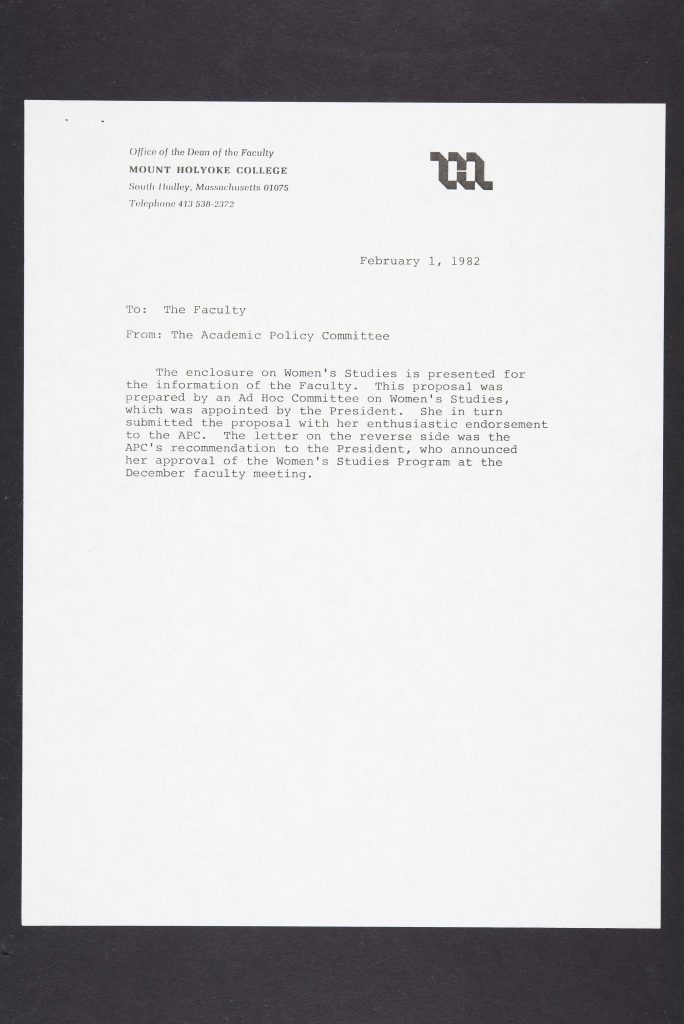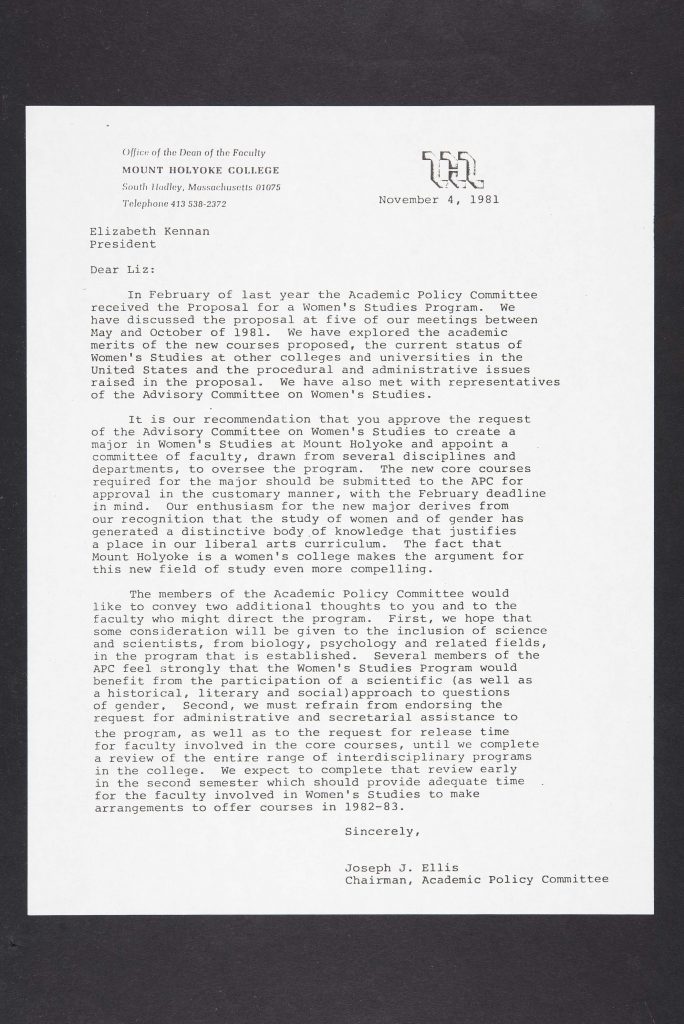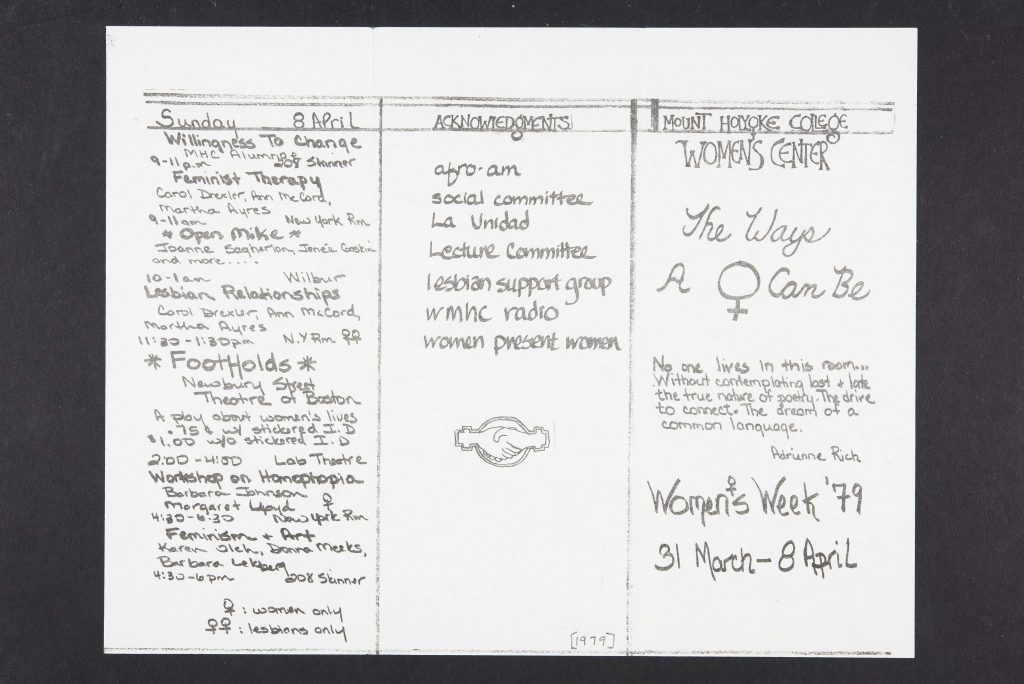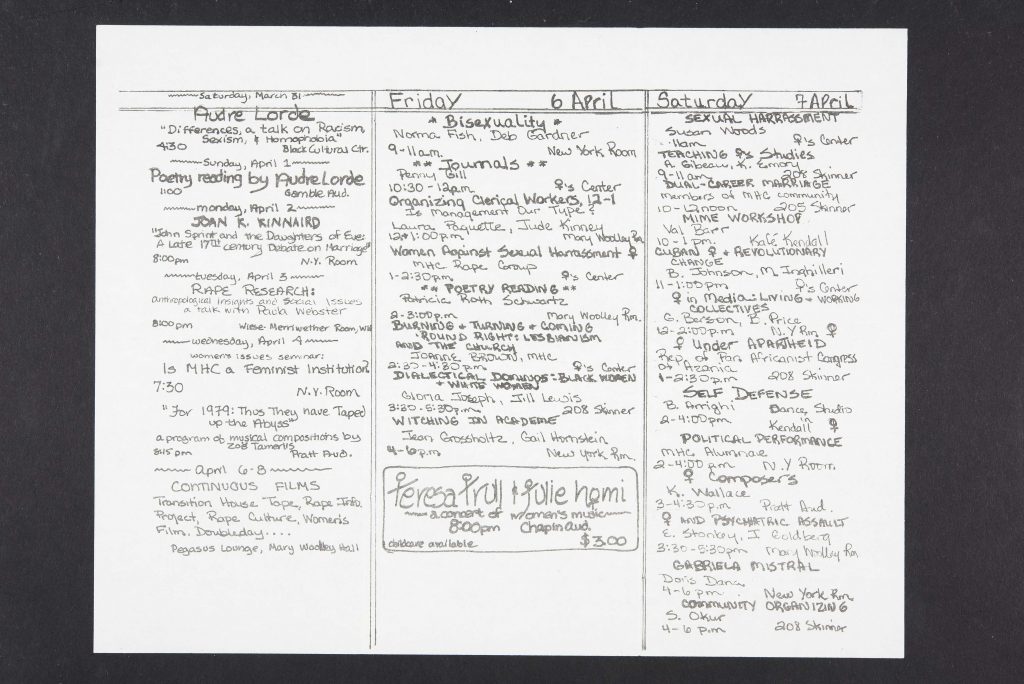The advent of Second Wave feminism marked a reinvigoration of pre-Cold War ideas and actions, shifting a fresh generation of college women away from the commonly held stereotype that school was a place to train secretaries and find husbands, and towards preparation for diverse careers and a competitive workplace. It was with a passion that these young students in partnership, and at times, competition, with their predecessors sought to push for equality in all manners of life from reproductive rights and sexual freedom to equal pay and accessible child care.
At college, students also began to push for representation, pressuring their administrations to install academic views of women’s accomplishments, issues, and perspectives in their curricula. The first formalized Women’s Studies course was introduced in 1965 at the Free University of Seattle and the first Women’s Studies majors followed shortly afterwards in 1971.
Yet, Mount Holyoke College did not create its own Women’s Studies program until 1978 and the program only became an academic major in 1983, at which point over 300 other such programs were already operating within the United States university system. As compared to the College’s groundbreaking approach to the multicultural requirement, it’s startling that Mount Holyoke College should have responded to Women’s Studies so sluggishly, especially considering its position as a historically women’s college. However, ultimately, it was this very concept which delayed curricular change.
A Curriculum Lacking
The selection of Elizabeth Kennan, class of 1960, as Mount Holyoke College president in 1978 marked the start of rapid change. The arrival of a female president on the heels of President David Truman seemed to almost demand action, especially action to address the fractured and, at times, livid debates occurring over women’s issues on campus. Even prior to her formal inauguration, President-elect Kennan was confronted with isolated, but strong calls for a revitalization of the curriculum to reflect a perspective apart from “American, middle-class, white males”. This task was previously shunted off to students organizations, such as the Women’s Center, or individuals forced to adapt select coursework to design their own Women’s Studies majors.
It was under these conditions of division, drive, and general dissatisfaction that Kennan sought to glean advice from trusted sources such as former Mount Holyoke alumnae. However, suggestions regarding Women’s Studies marked the major as “a novelty,” unnecessary given Mount Holyoke’s history of being women-focused, and generally offered few solutions in addressing Mount Holyoke College’s position on feminism.
The Women’s Center to the Side
The Women’s Center was established as a Mount Holyoke student organization in 1975 by “a group of women who identified a growing need on the campus for a place where women could come together to share their common experiences, thoughts, and dreams.” The students who founded the Center saw the creation of the space as a way to share and create discussion around women’s issues commonly ignored by the larger campus, such as sexual harassment, racism against women of color, and homophobia. The Center also served as a place for Women’s Studies to develop, first as a concept, with lectures and letters to faculty members and President Kennan, then as a new department.
Faculty Function

With pressure placed on the administration by students and their faculty advisors, a primarily student-initiated drive for Women’s Studies evolved into a faculty conversation. As the major’s proposal passed through the Academic Policy Committee (APC) and into the faculty meetings, discussions centered around the difficulty of navigating interdepartmental faculty and funding. At these stages, student input was effectively forgone save for those faculty members who attempted to communicate their students’ opinions.
Following grueling administrative procedures, the Women’s Studies major was passed for the 1983-1984 school year and quickly developed into an activism-focused department with courses angled towards community service, internships, and exploring how to make the world a better place for women. Today this department is known as the Gender Studies department, devoted to exploring questions of sexuality, gender, and their intersectionalities with race, class, and nation.


